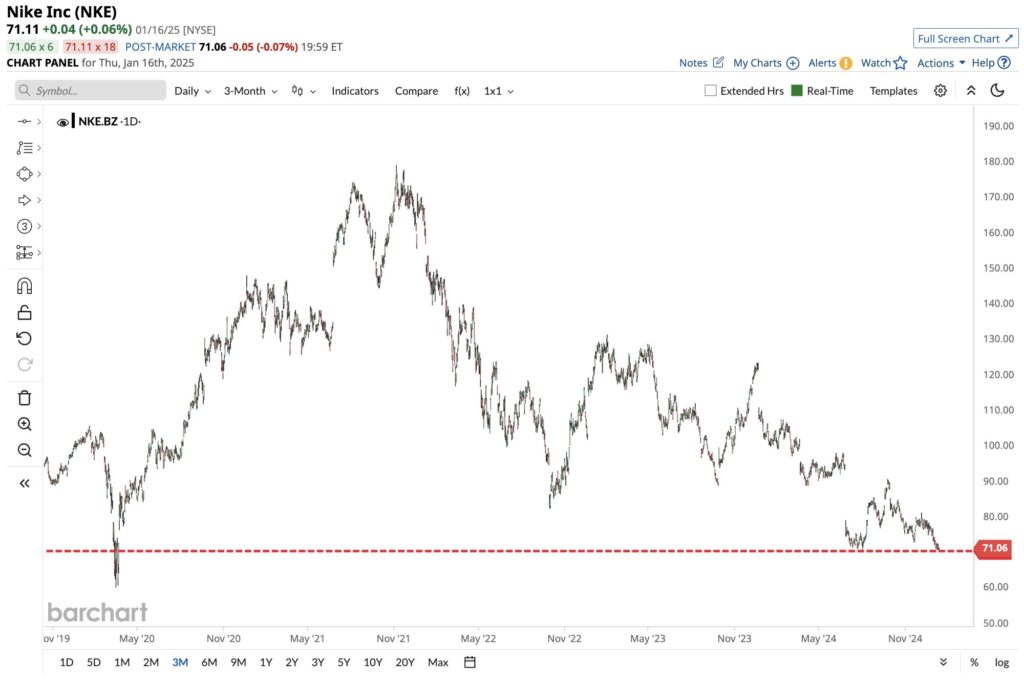Lessons from Nike’s 5-Year Flat Performance
Nike, a global leader in the footwear industry and a household name, has delivered zero returns for investors over the past five years. From a high of $180, the stock has fallen back to $71, erasing years of gains. While the brand, products, and management remain robust, the reality is that investors who held the stock during this period have seen no growth in their portfolios.

The Pitfalls of Holding Non-Performing Stocks
Nike’s case highlights a crucial investing challenge. Even with a well-established company, years of stagnation can erode confidence. From November 2019, when the stock was $100, to now, the stock has not only failed to grow but has underperformed significantly compared to other sectors like semiconductors or tech stocks, which have surged.
This underperformance underscores the importance of not being stuck in stocks that fail to deliver returns, even if they belong to leading brands. Holding such stocks comes with a significant opportunity cost, as capital could have been allocated to sectors or stocks that are thriving.
The Risks of Long-Term Holding Without Performance
Some investors argue that they buy stocks with a 20-year horizon and ignore short-term price movements. While this approach works for a few, it poses serious risks for most investors. If a stock underperforms for 5-10 years, it can:
Destroy confidence: Watching others’ portfolios grow while yours stagnates can be demoralizing.
Waste valuable investing years: If you start investing at 30, you may have a 40-year window. Losing a significant chunk of this time waiting for one stock to recover is a massive setback.
Even quality stocks with great management and products may not deliver the expected returns. Investors must realize that buy-and-hold doesn’t work for every stock.
The Case for Momentum Investing
Momentum investing offers a way to stay aligned with market trends and winning stocks. By focusing on performance, you can:
Exit underperforming stocks early, even if they are fundamentally strong.
Allocate capital to stocks that are currently thriving in the market.
Avoid the emotional and financial drain of holding stagnant or falling stocks.
This approach doesn’t disregard the quality of companies like Nike but prioritizes return on investment over emotional attachment to a stock or brand.
Adapting to Market Realities
In today’s fast-paced market, the idea of holding a stock for decades without reassessment is becoming outdated. Industries evolve, competition intensifies, and market dynamics shift rapidly. As investors, the goal is to make money, not just admire companies. Strategies that keep you aligned with market leaders and avoid laggards can significantly enhance portfolio performance.
WeekendInvesting launches – PortfolioMomentum Report
Momentum Score: See what percentage of your portfolio is in high vs. low momentum stocks, giving you a snapshot of its performance and health.
Weightage Skew: Discover if certain stocks are dominating your portfolio, affecting its performance and risk balance.
Why it matters
Weak momentum stocks can limit your gains, while high momentum stocks improve capital allocation, enhancing your chances of superior performance.
Disclaimers and disclosures : https://tinyurl.com/2763eyaz










